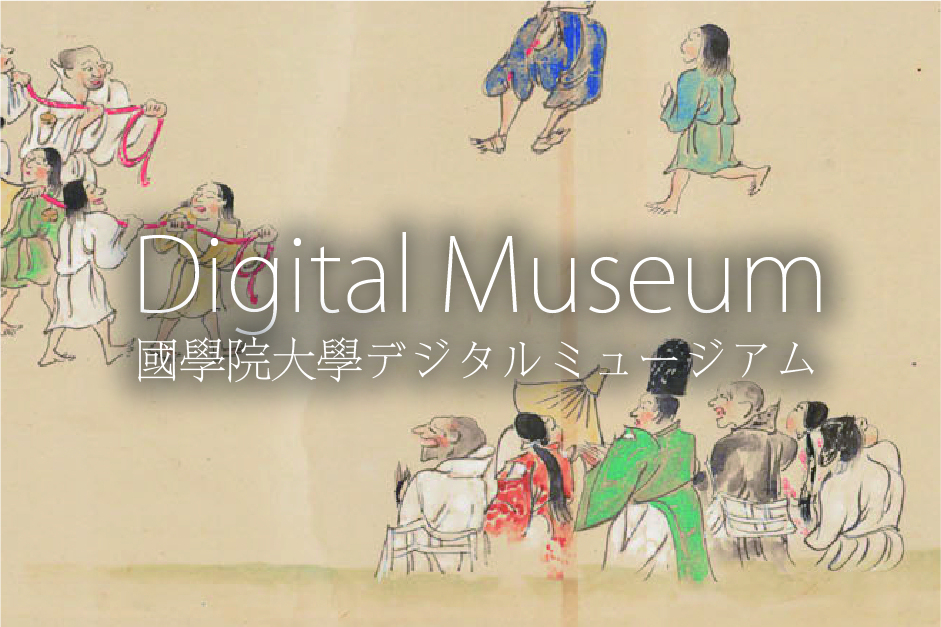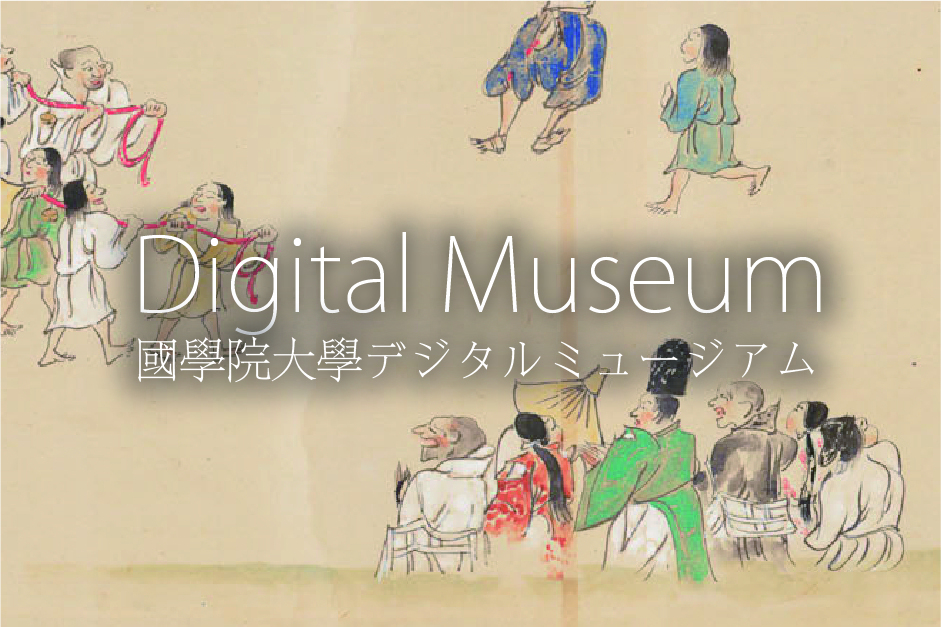- トップ
- Encyclopedia of Shinto
- § Shinto-Derived Religions
Encyclopedia of Shinto
| Main Menu: | |
| Links: |
詳細表示 (Complete Article)
| カテゴリー1: | 8. Schools, Groups, and Personalities |
|---|---|
| カテゴリー2: | Modern Sectarian Groups |
| Title | § Shinto-Derived Religions |
| Text | In the modern era Shinto-derived religious organizations can be broadly divided into two types, namely "sectarian Shinto" (kyōha Shintō) and "Shinto-derived new religions" (Shintōkei shinshūkyō). The term "sectarian Shinto" is widely used to indicate the thirteen sects of Shinto of the prewar era, while the term "Shinto-derived new religions" is normally used to refer to movements that, while including elements of traditional Shinto and influenced by it, have the elements of a "founded religion" (sōshō shūkyō), a religion whose origin can be traced to the teachings of a specific figure. The thirteen sectarian Shinto movements are, in order of foundation as independent movements: Kurozumikyō; Shintō Shūseisha, Izumo Ōyashirokyō, Fusōkyō, Jikkōkyō, Shinshūkyō, Shintō Taiseikyō, Ontakekyō, Shintō Taikyō, Misogikyō, Shinrikyō, Konkōkyō and Tenrikyō. These are all their current names.,Jingūkyō, however, which manifests similar characteristics and which subsequently became incorporated as a foundation, the Zaidanhōjin Jingū Hōseikai, is not included as one of the thirteen sects. On the other hand, Konkōkyō and Tenrikyō have argued in the postwar era that they also are, in fact, founder religions. A. The Formation of Sectarian Shinto In recent times, attempts have been made to classify the aforementioned thirteen sects as sectarian Shinto or as Shinto-derived new religions based on their substantive features rather than on their formal classification as sectarian Shinto movements. In such analyses, the characteristics of Shinto-derived new religions are considered to be those mentioned earlier, while movements categorised as sectarian Shinto are said to be sects that developed in the modern era while drawing influences from, and having deep connections with, the practices, rituals and teachings of Shrine Shinto, as well as the doctrines developed within early modern National Learning (Kokugaku ) and Restoration Shinto (Fukko Shintō). According to this categorization, the majority of the thirteen sects would be classed as sectarian Shinto, but Konkōkyō and Tenrikyō would more appropriately be seen as Shinto-derived new religions. In the pre-war era, Fusōkyō and Maruyamakyō (which later became affiliated with Shinto Honkyoku, a Shinto umbrella organization founded in 1885) were also of this type. By contrast, Jingūkyō and Izumokyō, which are not included among the thirteen Shinto sects, are rightly referred to as sectarian Shinto movements, while groups such as Kurozumikyō and Misogikyō, which manifest characteristics both of sectarian Shinto and of Shinto-derived new religions, may be considered as mixed-category types. The development of sectarian Shinto emerged out of the flowering of the National Learning and Restoration Shinto movements during the latter part of the Tokugawa period, and built upon new developments in mountain worship centered on such peaks as Fuji and Ontake. Its formation was greatly stimulated, too, by the religious policies of the Meiji government. While there were founders (of sectarian Shinto) such as Nitta Kuniteru of the Shintō Shūseiha, who gathered and taught disciples in the late Tokugawa period, the majority of founders who developed movements such as these, whose aim was to teach people to become adherents of Shintō, came to the fore during the period of unsettled, trial and error religious policies of the early Meiji period (c. 1868-1880). Figures such as Sano Tsunehiko of Shinrikyō, Yoshimura Masamochi of Shinshūkyō, Hirayama Seisai of Taiseikyō and Shishino Nakaba of Fusōkyō were of this type. Initially, the Meiji government sought to promote a form of state-centered teaching through a national system of religious instructors and moral preceptors (known as senkyōshi and kyōdōshoku), but, realising the limitations of this strategy, it turned, from the late 1870s onwards, to a policy of separating religion and state. In this policy, shrines were designated as places for the performance of state rituals, while other religions and institutions were placed in a separate category so as to separate the political sphere from the religious. In effect this produced, within Shinto, a division between a form of Shinto centred on public rituals and one centred on edification. The former gave rise to the modern system of shrine-centered kami ritual, while the latter gave birth to sectarian Shinto. In this way, the systematic organization of sectarian Shinto groups was encouraged. It was because of such circumstances that what is most noteworthy about sectarian Shinto in terms of religious history is the fist half of the Meiji period (i.e. 1868-ca.1890), when Shinto was forced into finding an identity as a proselytising religion. At the same time, in the context of the postwar organization of Shinto sects, attention also needs to be paid to the specific circumstances of each group's evolution, specifically as regards the development of their doctrines and activities. B. Formation of Shinto-Derived New Religions The emergence of Shinto-derived new religions also began during the late Tokugawa period. Kurozumikyō is widely considered to be the pioneer organization in this respect. Misogikyō, Konkōkyō and Tenrikyō all emerged during the latter years of the Tokugawa period, although it was not until the mid- Meiji period that Konkōkyō and Tenrikyō began to develop doctrines and organizational structures, and to expand their following. In the twentieth century, numerous other Shinto-derived new religions emerged, drawing on influences, both material and spiritual, from the teachings, structures, proselytising activities and the like, of these early new religions. The rapid growth of Tenrikyō is typical of the development of Shinto-derived new religions from the mid-Meiji period onwards. Its founder Nakayama Miki died in 1887, but within barely a decade of her death the number of her followers had increased dramatically, and the group had become the focus of much discussion in society. The emergence of Ōmoto in this same period was also important. This movement, which coalesced when Deguchi Nao met Deguchi Onisaburō, has been a major influence on subsequent Shinto-derived new religions. Although Ōmoto's strength as a religious organization has been severely undermined by the damage it received due to being twice repressed by the government (in 1921 and 1935), the influence of its thought has extended to many religious organizations, and it has become the progenitor of a group of movements known as the "Ōmoto-lineage" new religions. Thus, influenced by Deguchi Onisaburō's thought, Taniguchi Masaharu founded Seichō no Ie and Okada Mōkichi established the Dai Nihon Kannonkai (the forerunner of Sekai Kyūseikyō) during the early Shōwa period (i.e., ca. 1925-45). Tenrikyō also gave rise to several different religious groups, of which the Tenri Kenkyūkai (the forerunner of Honmichi), founded by Ōnishi Aijirō in the mid-1920s, is especially important. Honmichi, which also suffered repression in the early Shōwa period, likewise gave rise to a number of separate movements, and the influence of its thought has also been considerable. In the Taishō (1912-1926) and early Shōwa periods, a considerable number of Shinto-derived new religions developed, but in many of these cases, the groups were rather limited in size, and many have ceased to function at present, with the result that many details about them are unclear. Important movements that emerged in the Taishō period, and that continue to operate in the present include Shōroku Shintō Yamatoyama, Shintō Tenkōkyō and Soshindō, while significant movements from the early Shōwa period include Ishinkyō, Tengenkyō, Taiwa Kyōdan and Tenjō Kyōhon'in. During this early period, the state exerted progressively tighter controls over religion, and these became particularly strong during the period leading up to and including World War II, with the result an increasing number of cases were seen in which the founders and leaders of such new religions were arrested on suspicion of lèse majesté or of violating the Maintenance of Public Order Act (Chian ijihō). C. New Religions in the Postwar Era In the postwar era freedom of religion has been guaranteed by the Constitution and, especially after the proclamation in 1945 of the Religious Corporations Ordinance (shūkyō hōjinrei ) and in 1951 of the Religious Corporations Law (shūkyō hōjinhō), it became relatively easy for a group to acquire the status of a religious corporation (shūkyō hōjin) i.e. a legally constituted independent religious organization. As a result, many movements became independent, and an increasing number registered as legal corporations under the Religious Corporations Law. In some cases, religious groups that had been affiliated under the aegis of the pre-war thirteen sects gained independence, while in others, religious associations (shūkyō kessha) assumed the status of legally constituted independent religious organizations (shūkyō hōjin). In addition, a variety of other newly formed religious movements also emerged in this era. In the immediate aftermath of the war, society was in a state of turmoil, and many movements, such as Tenshō Kōtai Jingūkyō and Jiu emerged and became the focus of great attention in the media. Another point to note in this context is the number of movements that developed out of, and seceded from, Sekai Kyūseikyō in the postwar era. These included Seimeikyō, Kyūsei Shinkyō, Shinji Shūmeikai and Sukui no Hikari Kyōdan. In addition, Okada Kōtama, who was influenced by Sekai Kyūseikyō, founded the Sekai Mahikari Bunmei Kyōdan, from which subsequently Sūkyō Mahikari seceded as an independent movement. In the light of such issues, it is evident that the Ōmoto lineage (from which Sekai Kyūseikyō emerged), taken in its broadest context, was an important constituent element of the Shinto-derived new religions. D. Doctrinal Features When a religious organization develops out of the Shinto tradition, it faces a major hurdle in how to explain its doctrines. Among sectarian Shinto movements, numerous examples exist of groups basing their position on traditional polytheistic kami-centred faith while enshrining and venerating one or more specifically selected deities. Furthermore, it was quite common for such groups to use traditional practices such as magical incantations and divination in their proselytising activities. In contrast, Shinto-derived new religions, especially those broadly included within the Ōmoto lineage, often created special and unique names for their deities. A further characteristic is that these groups place considerable emphasis on the importance of spirits in their teachings. Ōmoto has explicated its teaching with the notion that "the spirit is the master, the body the pupil," meaning that the spirit world is superior to the phenomenal world. This fact also indicates the belief that even after passing over to the spirit world, one can to some extent influence and take respond to problems in this world. Such teachings about spirits were applied in various ways within these religions, and in practical terms gave rise to ritual practices such as tekazashi (the act of raising one's hand to perform spiritual purification/healing) and jōrei (spiritual purification or healing). Apart from movements deriving from the Ōmoto tradition, Shinto-derived new religions in the postwar era have included Zenrinkyō, Ōyama Nezunomikoto Shinji Kyōkai, Reiha no Hikari Kyōkai and Shinmei Aishinkai. In addition, Ijun is a representative example of the new religions that have emerged from Okinawa. Movements such as these have generally been founded in the mystical experiences of their founders and, especially, their communications with the spirit world. In general, too, it can be suggested that Shinto-derived new religions as a rule tend to not distinguish between gods (kami) and buddhas (butsu) in their doctrines and rituals. This tendency can be considered due to the enduring influence of Japanese history in which the kami and buddhas have been considered together within the single category "shinbutsu." , - Inoue Nobutaka |





